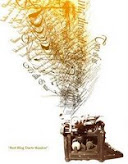Last week I wrote about Surrealism and some of the movement’s important members. Paul Klee was a bit different from Salvador Dali and Max Ernst. Klee’s style was a blend of surrealism, cubism, and expressionism. He also loved the drawings of kids and tried to mix that energy and simplicity into his own work.
Paul Klee was born in Switzerland in 1879. When he was young he loved music and thought he might become a musician when he grew up. His grandmother gave him a box of chalk and he drew with it often. He began to love art as well. As a teenager he decided he enjoyed drawing more than playing the violin. He went to school at the Munich Academy in Germany to study his craft.
He did not think he was a very good painter and he struggled at school. Throughout his life, Klee met many great painters, including Kandinsky, and each helped him improve a little.
Klee’s early works were colorless. He created mostly pen-and-ink drawings and etchings. During this time (early 1900s) he thought that color was just decoration. He didn’t think it was essential or even needed. Then he traveled to Tunisia and saw the color and the light. He fell in love with color and his artistic style changed forever.
Click here to see the color in some of Klee’s paintings. Most of his painting were very small and used a lot of color.
During World War I, Klee painted camouflage on German planes. Following the war, he taught at the Bauhaus school then at the Dusseldorf Academy. He was targeted by the Nazis during the years leading up to World War II and he had to leave his teaching job. Seventeen of his paintings were shown in the Nazi exhibition of “degenerate art.”
When he died in 1940, Klee had painted nearly 9000 works.
Return to main page.
Friday, May 2, 2008
Subscribe to:
Post Comments (Atom)








2 comments:
thanks- it helped
alright
Post a Comment